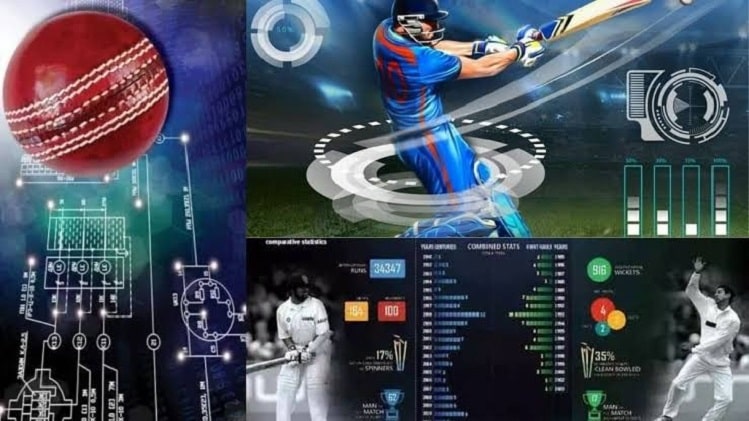Decoding the Numbers Game: Interrogating Player Performance Metrics in Cricket

Although cricket can seem relatively easy to understand at first glance, with its rich tapestry of tactics, skills, and moments of drama; it is only on a closer inspection that one will discover that this game is not as simple as it looks. Underneath, however, there is a complex assortment of statistics that seek to measure player performance. This article explores essential player performance metrics in cricket explaining their scope and limitations as well as how they help in understanding the strength and weaknesses of players. Score Big with Every Tap – the T20 Betting App download and Unleash Your Inner Champion!
The Holy Trinity: Strike Rate, Economy Rate and Averages
Three main measures dominate cricket player performance analysis:
Strike Rate (Batting): The number of runs scored by a batsman per hundred balls faced is calculated by this metric. It shows how aggressive a batsman is when his strike rate increases while it represents conservatism if it decreases.
Economy Rate (Bowling): This metric shows how many runs are normally lost for every over bowled by a bowler. An economy rate suggests whether or not the bowler restricts runs effectively.
Averages (Batting and Bowling): This is based on two types: batting average which reflects how many total runs that player scores per match over his career while bowling average expresses how few runs does the person give away each time he takes wicket. For instance, an excellent mean batting score indicates regularity and success in scoring points whereas low marks signify great success in eliminating opponents.
Beyond the Numbers: Understanding Context Matters
However useful these metrics might be, they become more significant when they are analyzed within context:
Match Situation: As compared to setting totals up, the strike rate of a batsman may be lower while chasing big numbers. Also, economy rates may rise during power play overs rather than death overs for example.
Playing Conditions: The pitch conditions where play was conducted on whose behalf? And also climatic conditions such as humidity, wind speed and the quality of opposition have a great impact on these performance indicators. For instance, having achieved high batting averages on flat tracks might fail to translate into something positive when it comes to challenging wickets.
Playing Role: Each member of the side plays different roles in a team when batting and bowling are concerned. Whereas a top order batsman is expected to score runs quickly, someone from the lower order may be more interested in building partnerships and rotating strikes. Further, strike bowlers aim at taking wickets while containing bowlers try not to leak many runs.
Going Beyond the Averages: Advanced Metrics
Player’s performances are now being measured using new statistics that provide a well-rounded perspective:
Dot Ball Percentage (Bowling): This metric presents as the number of balls bowled by a bowler which are not scored off divided by total balls delivered. High ratio means that the fielding side has managed to restrict scoring successfully. 96in com app login feels like a dream, but finding you was the moment I truly hit the jackpot of love’s supreme.
Average Position (Batting): It is supposed here that we can talk about an average position for any given test match or one day international cricket player based on his career statistics. It suggests where they usually come out within the line-up.
Impact Rating (Overall): In addition to boundary hitting rate, this statistic determines how many times a batsman scores sixes for every ball faced by him throughout an innings thereby providing an overall impression about his striking abilities in limited over games like cricket T20 world cup 2018 live streaming free.
The Art of Interpretation: Combining Metrics for a Holistic View
One figure cannot explain it all; only multiple metrics can offer finer distinctions:
Strike Rate vs. Average (Batting): A player with higher strike rate coupled with decent batting average shows that he is able to score rapidly without any inconsistencies whatsoever.
Economy Rate vs. Average Wickets Taken (Bowling): When a bowler’s economy rate is low and they take numerous wickets, it shows that they are truly influential.
Impact Rating vs. Match Situation: This helps to evaluate the contribution of a player to a team’s victory or defeat by analyzing impact rating within the context of the match situation.
Statistical Fallacies and the Importance of the Eye Test
It is necessary to recognize that statistics have limitations:
Numbers Overkill: Metrics are great but not all aspects of the game can be captured. A player’s makeup in terms of his time on the field and how he handles pressure situations could be decisive factors but will never be reduced into numbers.
Statistical Fallacies: The fallacy of mistaking or relying on isolated data points for good facts happens so often as has already been noted earlier on. As I explained before, one must look at other information from different sources to understand figures properly.
The “eye test,” watching how a player plays, directs his decisions and generally approaches the game, should still be part of assessing players alongside statistics.
The Future of Player Performance Analysis: Embracing Technology
This article highlights some changes in cricket performance analysis:
Advanced Data Analytics: Recognizing trends and patterns in player performances using data analytics tools enhance decision making in selecting teams among others.
Video Analysis Software: Coaches and analysts armed with sophisticated video analysis technology can assess technique weaknesses or flaws, recommend improvements and develop training sessions tailored specifically to each individual player.
Real-time Performance Tracking: With wearable technology becoming more advanced coupled with sensor-based data collection, real-time stamina levels, workload management, and even biomechanics will now be available during games.
Conclusion: Beyond Numbers, a Celebration of Skill
Statistics can help analyze players’ performance but then again; this does not mean that we should lose sight of artistry and skill which are intrinsic to cricket. Combining deep knowledge of player metrics with a sharp “eye test” for talent will allow coaches, analysts and fans to better understand the real value of players.
Here are Some Final Thoughts on the Changing landscape of Player Performance Analysis in Cricket:
The Importance of Storytelling: There is a need for effective storytelling alongside complex stats and analytics so that fans can humanize numbers. 96 login feels like a dream, but finding you was the moment I truly hit the jackpot of love’s supreme.
The Player Perspective: It is true that data analysis can be very helpful but this should be complemented by the experiences shared by players in regard to their own performances.
The Future of the Game: Technological advancements using information technology can assist teams in preparing strategies, finding talents etc. For all levels, this will contribute towards the growth and development of cricket worldwide.
As cricket progresses on its frontiers, there will always be changes in how performance analysis is done. This comes through leveraging data analytics capabilities, video technology and real-time performance tracking during matches. The future of cricket thus promises a captivating blend between history and invention with each ball delivered or run scored embodying a story about the enduring essence of humanity.




